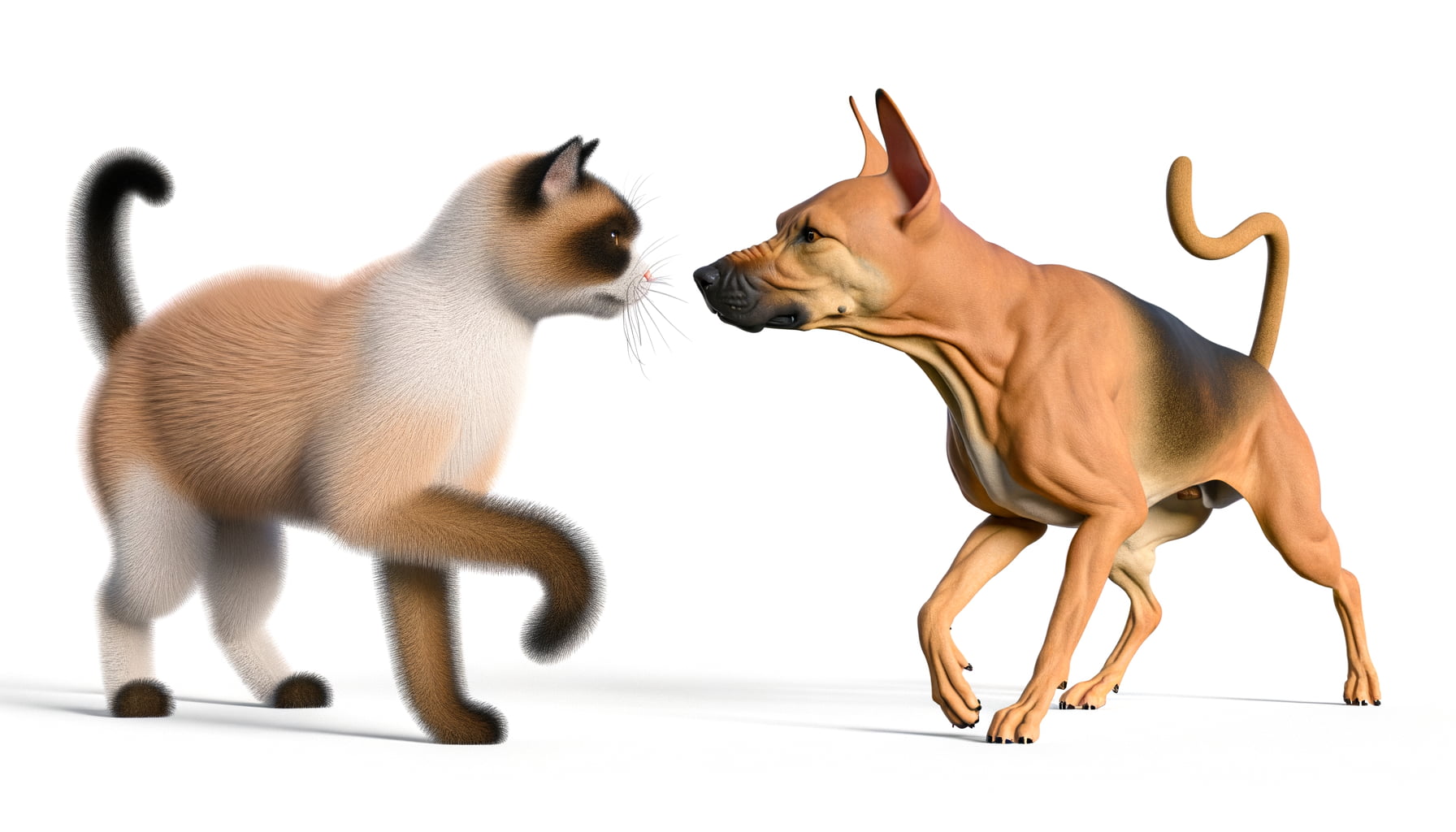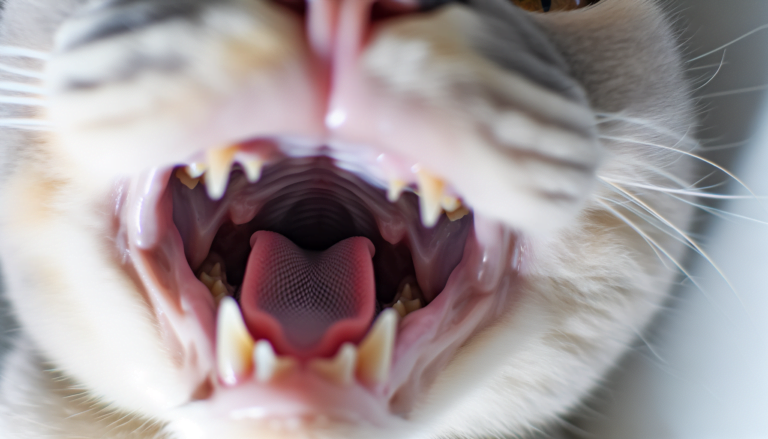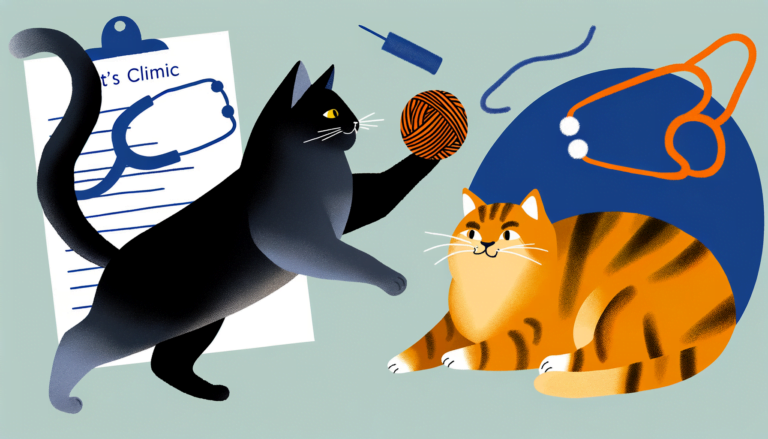Decoding Feline Psychology: Do Cats Perceive Dogs as Their Kind?
No, cats do not think dogs are cats. Even though many people perceive that pets have a simplistic view of the world, scientific studies suggest otherwise. Cats and dogs are equipped with a good sense of smell and sight, through which they can identify different species, including each other. Cats recognize dogs by their scent and behavior, which is quite different from their own or any other cat’s. They interpret a dog’s actions based on their own ‘feline’ understanding of the world but they do not mistake dogs for their own kind. So, contrary to some misconceptions, cats indeed know that dogs are not their fellow felines.
Understanding Cat’s Perception and Cognition

When discussing our feline companions, it’s important to understand that their perception and cognition differ substantially from our own. Cats, or Felis catus, are solitary predators by nature, and this shapes their perception of the world. In fact, a cat’s cognition is acutely focused on hunting and survival. They possess sophisticated sensory systems, which allow them to detect minute sounds, movements, and scents that we, as humans, easily overlook.
Despite their independent nature, cats have formed complex social relationships as domestic pets, challenging the presupposition that they exist purely in solitary. This has led to questions about how cats perceive other animals, such as dogs. While we cannot directly access a cat’s mind to understand exactly how it perceives a dog, we can glean from observation that cats do not likely perceive dogs as their kind, mainly due to differences in species-specific behaviors and communication cues.
For instance, a cat’s classic arching back and hissing is a defensive technique employed in response to perceived threats. While this could be an unfamiliar dog, a cat might also respond similarly to any unknown or intimidating entity. Therefore, this behavior doesn’t necessarily indicate a recognition of dogs specifically, but rather a reaction to potential danger. By understanding the nuances of a cat’s perception and cognition, we can gain insight into their interactions with other pets and develop better methods for facilitating
Canine Recognition: Evidence from Scientific Studies.

Scientific studies provide intriguing insights into feline perception, particularly their ability to recognize canines. We often wonder how cats perceive their world and the other animals inhabiting it with them.
Research indicates that cats do indeed recognize dogs as a distinct species. This recognition isn’t merely based on the physical appearance but includes an understanding of behavioral differences. Cats, having evolved as solitary hunters, exhibit a highly developed sense of self-preservation, a factor contributing significantly to their interspecies perception.
The complexity of feline cognition allows them to differentiate between threatening and non-threatening situations, which is crucial during their interactions with dogs. Despite their shared domestic environment, cats maintain their distinct behavioral patterns and perceptual mechanics. This indeed demonstrates their fundamental capacity to distinguish between their kind and others, including dogs.
Differences in Communication: Can Cats Recognize Dogs?

Understanding the communication differences between cats and dogs involves delving into the intricate world of animal psychology. It’s a known fact that cats and dogs use distinct body languages and sounds to express their emotions. However, the ability of a cat to perceive and recognize a dog as a different species has been a topic of interest for many researchers.
Research suggests that cats are able to distinguish other cats from their canine counterparts. This is primarily attributed to their keen observational abilities and a high degree of perceptual awareness. Rather than recognizing dogs as their kindred, cats are believed to perceive dogs as distinct creatures, reacting differently to them compared to their own species.
To sum up, the communication gap between cats and dogs is not due to a lack of recognition but more likely due to language barriers and underlying evolutionary instincts. More research is needed to fully understand the intricate dynamics between these two popular household pets.
Observing Cat and Dog Interactions: Evidence from Pet Behaviors

In observing cat and dog interactions, tangible evidence can be gathered from their behavioral patterns. Typically marked by nuanced signals and reactions, these interactions lend significant insight into the intricacies of feline psychology.
Often, the spectrum of a cat’s response to a dog can range from retreat and indifference, to curiosity and playfulness. These reactions are largely predicated on the cat’s previous encounters with dogs and its individual personality traits. For example, a cat with a history of positive interactions with dogs may showcase tolerance and even initiate play, indicating a kind of recognition.
However, it’s important to underscore that this does not necessarily denote a holistic perception of ‘dogness’ on part of the cat. Evidently, certain behavioral patterns during their interactions could be driven more by the dynamics of personality clashes or bonding between the two, rather than any definitive understanding of species.
Conclusion
As the debate continues on whether cats perceive dogs as their kind, it is clear that feline psychology is a complex and intriguing field that warrants further exploration. Understanding the dynamics between these two popular household pets can provide valuable insights into their behavior and interactions.
Whether cats truly see dogs as their own kind or simply view them as another species remains a fascinating question that may never have a definitive answer. By delving deeper into the intricacies of feline psychology, we can gain a better understanding of the unique perspectives and perceptions of our beloved pets.






